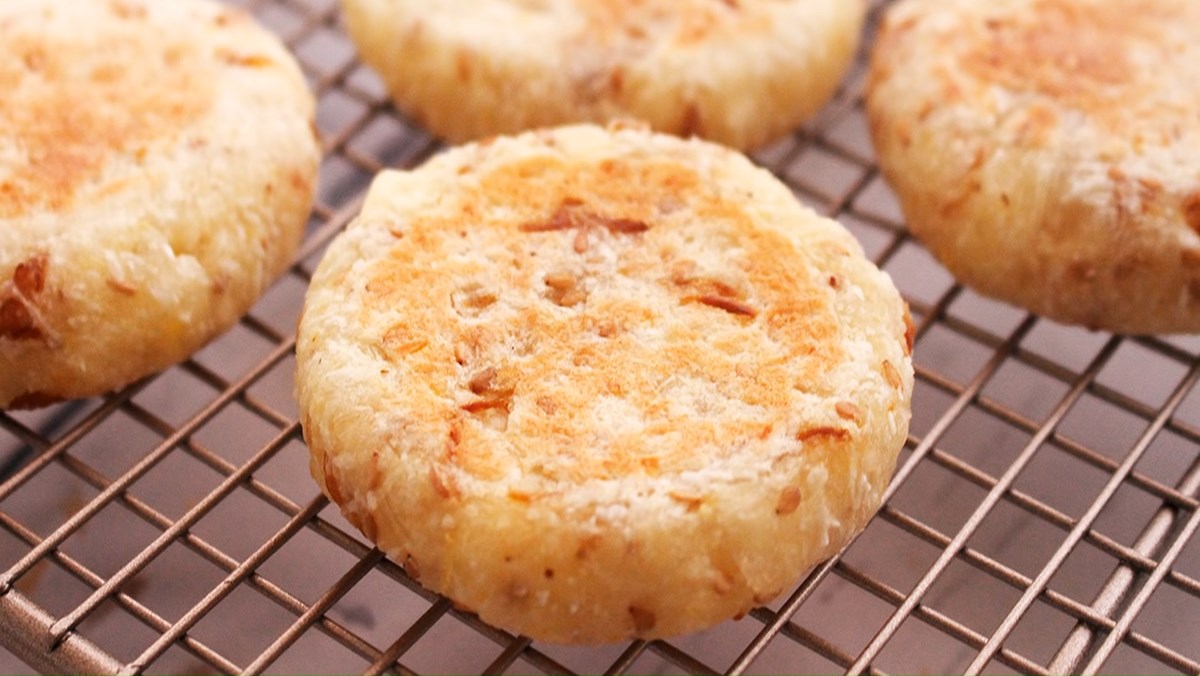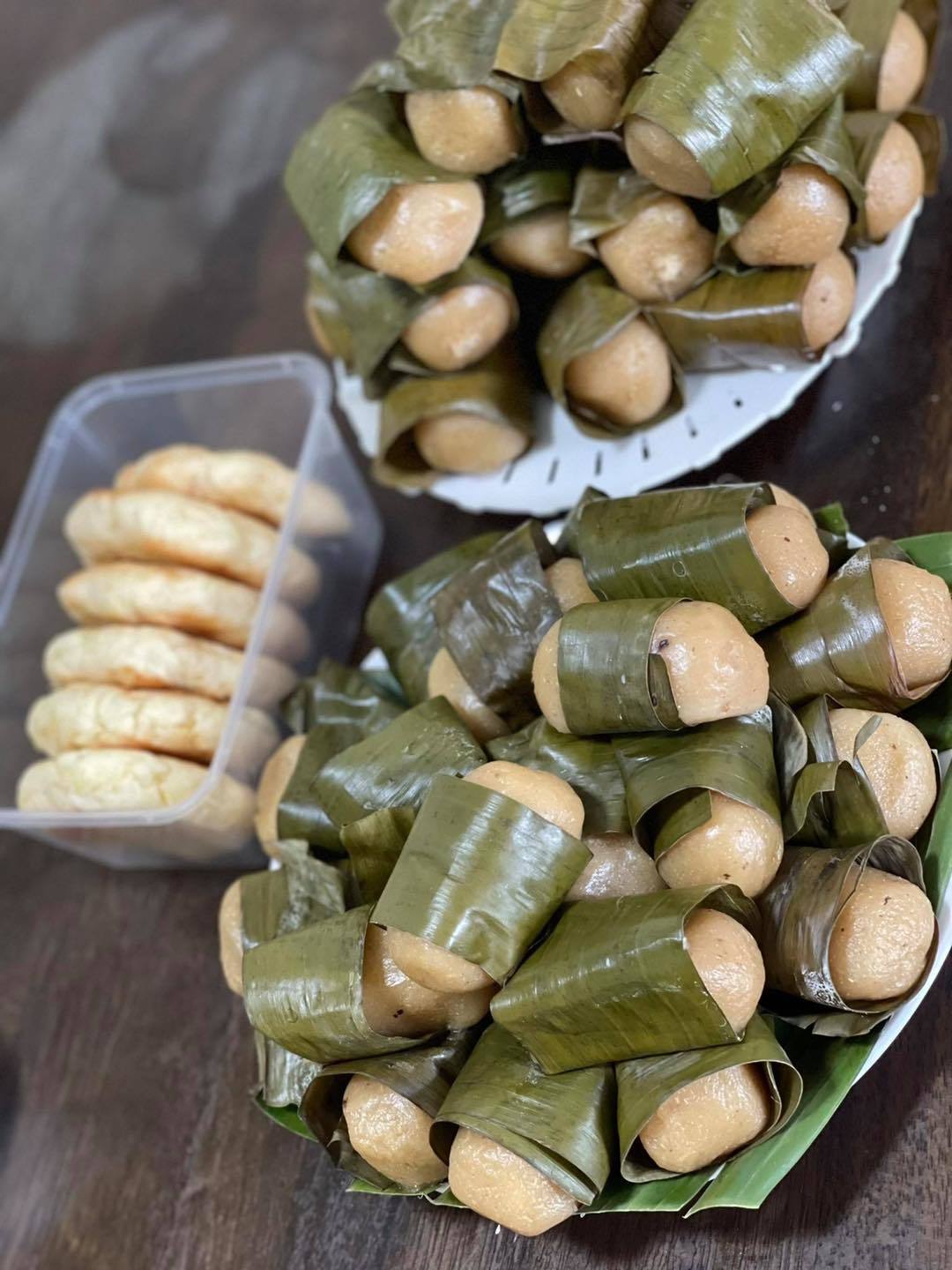From the traditional fillings of mung bean paste and coconut to modern twists like durian and banana, each bite of Vietnamese cassava cake tells a story about Vietnamese culinary culture.
During your holiday in Vietnam, besides visiting famous tourist attractions, enjoying Vietnamese cassava cake should be one of the top activities on your bucket list. Being regarded as one of the most popular Vietnamese desserts, this special kind of cake features the typical characteristics of the S-shaped country’s cuisine. Read on to discover the ingredients of Vietnamese cassava cake and some fantastic places serving this sweet delicacy.
1. What is Vietnamese cassava cake (Banh khoai mi)?

Thanks to its nourishment and health benefits, cassava has been the main ingredient in numerous Vietnamese dishes for a long time. Among those, Vietnamese cassava cake stands out as a cherished delight that encapsulates the heartwarming flavors and traditions of Vietnam.
The traditional version of Vietnamese cassava cake is made from meticulously boiled cassava tubers, transformed into a smooth puree through careful grating. Then, this blend is mixed with some common ingredients, such as coconut water, salt, and sugar. With the comforting notes of cassava and the richness of coconut milk, this delightful dessert will definitely arouse your taste buds.
Besides this original Vietnamese cassava cake, tourists can easily find a myriad of modern Vietnamese cassava cakes being sold, including Baked Green Bean Cassava Cake, Spicy Cassava Meat Cake, Durian Toasted Cassava Cake, Fried Banana Cassava Cake, Steamed Jackfruit Cassava Cake, Taro Filled Cassava Cake, and Baked Banana Cassava Cake. Each version of this special cake offers a unique twist, which showcases the creativity of Vietnamese bakers.
2. Recipe for Vietnamese baked cassava cake

Making Vietnamese cassava cake is quite simple and not time-consuming, so you can easily make this dessert at home. Here are some ingredients that you should prepare in advance:
- 1 kg cassava
- 700 ml coconut milk
- 150g condensed milk
- 250g sugar
- 125g cassava flour
- 2 chicken eggs
- 50g green beans
- 50g butter
- Vanilla essence
*Tips to choose cassava: You should pick stout, straight tubers with a greasy skin for a softer, less fibrous texture. Cassava with a pink inner shell will have a sweeter flavor and lower toxicity compared with the white one. It is also worth noting that cassava should be used promptly to prevent taste deterioration.

After preparing all the above-mentioned ingredients, you can follow this step-by-step guide to make Vietnamese baked cassava cake at home:
- Step 1: Grind tapioca
- Clean and peel the cassava, removing any fibrous parts.
- Soak the tapioca in water for 1-2 hours.
- Grind the soaked tapioca using a sharpener. If not available, cut the tapioca into small pieces and blend in a blender. Note that using a sharpener provides better results.
- Step 2: Mix the ingredients
- Squeeze the ground tapioca to remove excess water and collect the settled starch.
- In a mixing bowl, combine the tapioca starch, cooked green beans, granulated sugar, tapioca flour, and egg yolks. Mix well by hand.
- Add the condensed milk and melted butter to the tapioca mixture. Mix thoroughly by hand until all ingredients are combined.
- Gradually pour in the coconut milk and add the scraped seeds of the small vanilla bean. Mix the ingredients until well incorporated.
- Step 3: Bake the cake
- Preheat the oven to 170-175 degrees Celsius (338-347 degrees Fahrenheit).
- Grease the cake mold with a little butter or cooking oil to prevent sticking.
- Pour the cassava mixture into the mold, ensuring even distribution.
- Place the mold in the preheated oven and bake for 60-70 minutes, or until the cake is cooked through and has a golden brown color on top.
- To check for doneness, insert a toothpick into the center of the cake; it should come out clean when the cake is fully baked.
- Once baked, remove the cake from the oven and allow it to cool in the mold for a few minutes.
- Carefully remove the cake from the mold and let it cool completely before slicing and serving.
3. Best places to try Vietnamese cassava cake in Ho Chi Minh City

Even though there are a myriad of bakeries offering Vietnamese cassava cake in Ho Chi Minh City, it is not always easy for tourists to find a quality one. Here is a list of several amazing places where you can enjoy this flavorful cake:
- Banh Khoai Mi Nuong Co Chau
- Address: No. 220, Le Quang Sung Street, Ward 6, District 6
- Opening hours: 9:00 am – 5:00 pm
- Price range: 7,000 – 21,000 VND
- Tiem Banh Nuong Tit Mit
- Address: No. 216A, Nguyen Thai Binh Street, Ward 12, Tan Binh District
- Opening hours; 7:00 am – 10:00 pm
- Price range: 5,000 – 50,000 VND
- An Vat Tu Bun
- Address: No. 320/45, Doan Van Bo Street, Ward 10, District 4
- Opening hours: 7:30 am – 10:30 pm
- Price range: 40,000 – 130,000 VND
- Banh Ngot Bao Huy
- Address: No. 17A, Xom Dat Street, Ward 8, District 11
- Opening hours: 7:00 am – 10:00 pm
- Price range: 50,000 – 150,000 VND
4. Other famous cassava cakes in Vietnam
4.1. Silkworm cassava cake (Banh tam khoai mi)

Silkworm cassava cake holds a special place in Vietnamese hearts, evoking nostalgic memories with its simple preparation and timeless flavors. Made from tapioca, sugar, condensed milk, and coconut milk, this cake boasts a chewy interior and a greasy-rich coconut exterior. Topped with roasted sesame or peanuts, it is a sensory delight meant to be dipped in sesame salt, embodying the essence of tradition and culinary heritage.
4.2. Phu Tho cassava cake

Phu Tho cassava cake is a special treat with sweet and savory versions. The savory one is more complex, featuring ingredients like meat, beans, wood ear mushrooms, and even ant eggs. The sweet version often consists of ingredients like coconut, red beans, black beans, bananas, sesame, and more. Making the cake involves peeling and grinding cassava, then molding it with different toppings for diverse tastes.
4.3. Nghe An cassava cake
People in Nghe An have a different way of making cassava cake, which reflects their deep-rooted culinary traditions. According to the recipe of Nghe An locals, cassava is peeled and soaked to remove bitterness. Then, it is rubbed by hand to create tapioca powder, mixed with molasses, and formed into thin portions. These portions are wrapped in banana leaves, filled with green bean paste, and steamed for about 30 minutes.
4.4. Cassava cake of Tay people
If you have the opportunity to visit the Ban Lien mountainous area during your holiday in Vietnam, it is highly suggested that you try two special types of cassava cake here. The Tay people of Ban Lien village have a traditional way of making cassava cake. They boil cassava roots, pound them into a dough, shape it into flat cakes, and bake them on charcoal. They also make another version using grated cassava roots mixed with eggs and seasoning and fried until golden. This versatile dish is often enjoyed with rice at everyday meals.
4.5. Spicy cassava cake (Banh khoai mi cay)

Spicy cassava cake is highly preferred by Saigonese and is often served as a snack. This local favorite takes raw cassava, grates it, and then blends it with curry powder, scallions, and satay spices. The mixture is formed into balls and deep-fried to perfection, resulting in a delightful yellow-orange hue. With a crispy outer layer and a tender interior, each bite offers a burst of flavor – a touch of pungent onion and a gentle spiciness from the satay.
